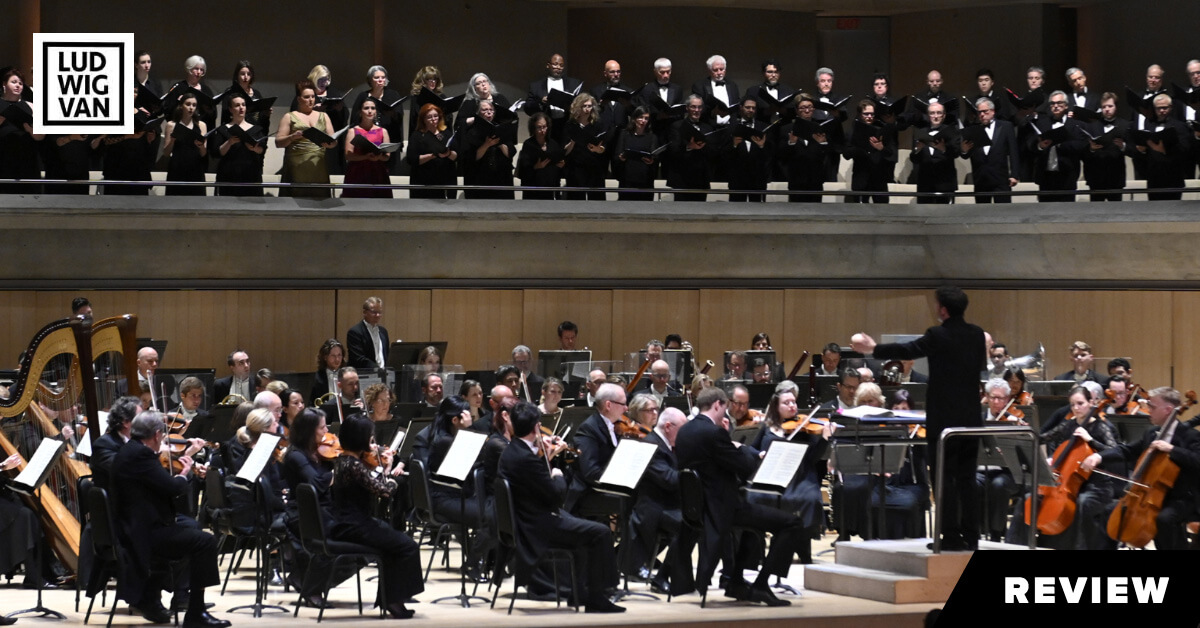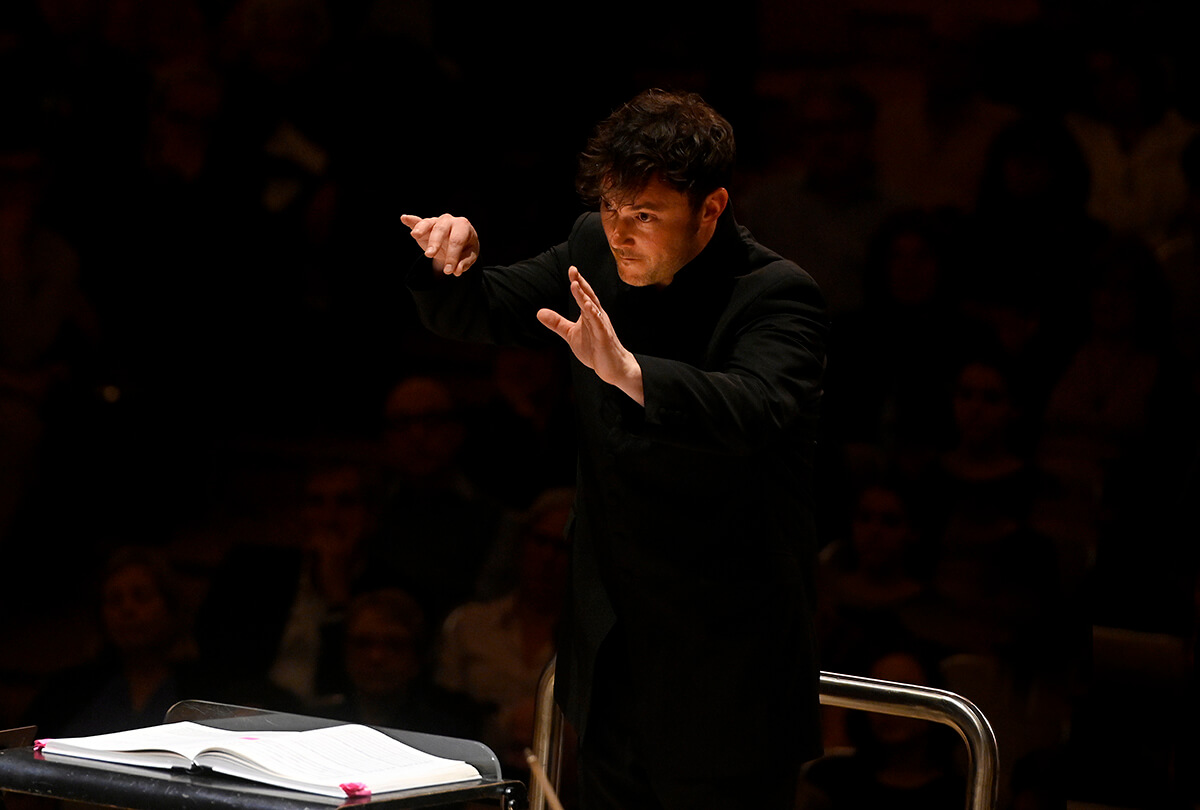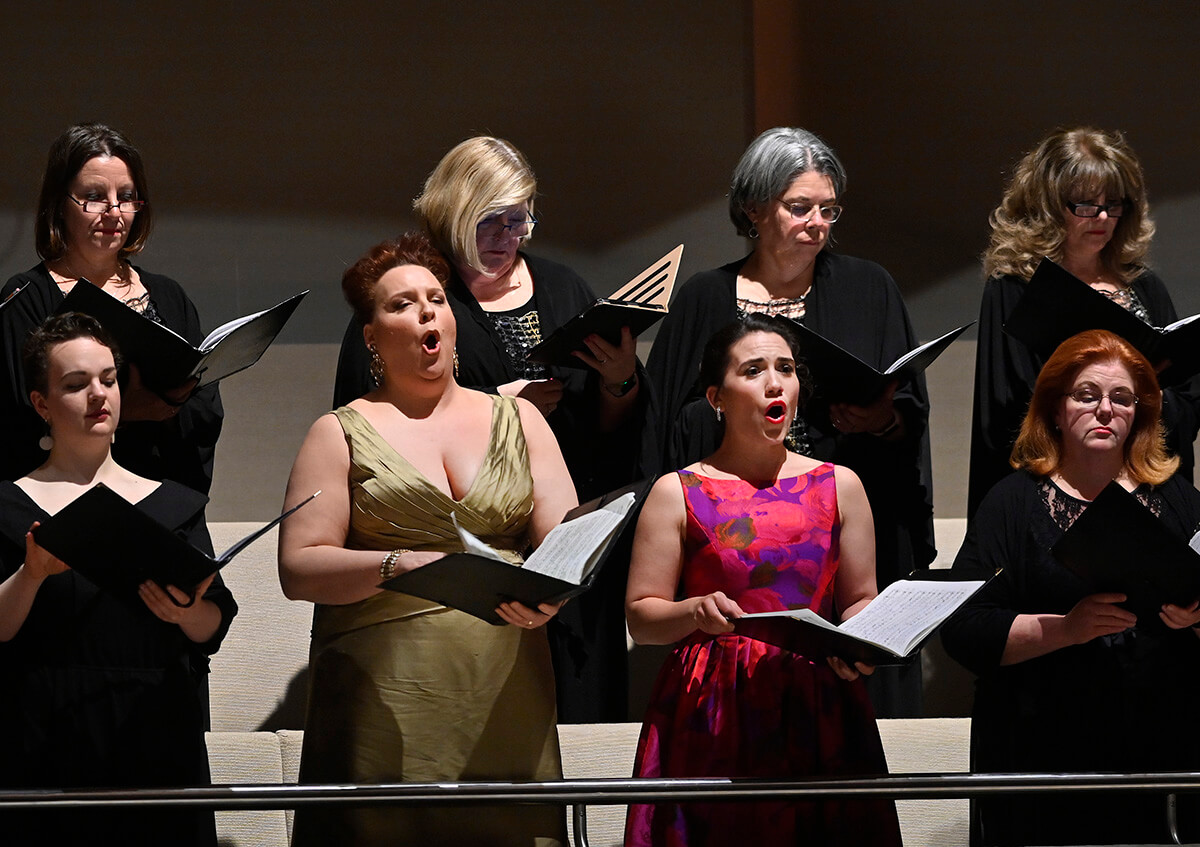
Mahler Resurrection Symphony: Toronto Symphony Orchestra with Matthew Halls (conductor), Joélle Harvey (soprano), Marie-Nicole Lemieux (contralto), Amadeus Choir and Elmer Iseler Singers, Lydia Adams (director) at Roy Thomson Hall. April 17, 2019. Repeats April 18 & 20. Details, here.
Well, it happened again. Yet another conductor abruptly pulled out due to illness from a major Toronto Symphony Orchestra event — this time it was Juanjo Mena — but happily, another conductor of equally exciting mettle and interpretive skill was quickly found.
And, for the third time, it was Matthew Halls, yet again, who was called in as a replacement and the results were profoundly inspired revelations of Mahler’s Resurrection Symphony.
For a few of us, there were many questions to ask before the performance even started. How would Halls bring together his divergent and specialized backgrounds in choral and orchestral conducting, early music and opera, into a modern interpretation of the very popular Mahler Symphony No. 2? It was likely to be different from what we last heard here four years ago to broad acclaim under the baton of music director Peter Oundjian (now the TSO’s conductor emeritus).
Well, it certainly did not disappoint as a carefully posed contrast to other Mahler Resurrection interpretations I have heard. Working with the Gilbert Kaplan Society score (2005), now the most authoritative edition available of the Mahler Resurrection symphony containing nearly five hundred critical updates to the orchestration, Halls gave us the chance to listen to a live concert version packed with the most recent scholarship of the composer’s most popular symphony.
The new edition made all the difference especially in the multiple new notations of dynamics. Halls studied each of those critical changes in the score and it was clear that he was attempting to strike a balance between what they offered, how best they could manifest a lucid new interpretation, how well they could be accommodated to each section of the orchestra, and finally, how they would impact blending in the acoustic in Roy Thomson Hall.
Halls had a tall order placed before him and he didn’t flinch. The results were very much outstanding.
In the quiet second movement Ländler, the counterpoint was elucidated with a fresh clarity, and the third movement depicting St. Anthony preaching to the fish, with its sense of desperation and biting satire of a human nature that hears but cannot absorb revelation — instead swimming away from it — was magnificent in this newer version.
But one of his more impressive interpretive accomplishments (perhaps not so much Mahler’s idea but it worked wonders regardless) was unifying the last three movements together without pause, turning the symphony into a broader architectural monolith.

The first movement pre-existed the arrival of the Second Symphony as the tone poem Totenfeier, a kind of ritualistic tribute to the heroic dead, filled with tonal and loose thematic echoes taken from across Beethoven’s orchestral music. Mahler had to change the symphonic poem’s original premise into one of searching speculation about death and the meaning of life. In many ways, the first movement is the hardest to listen to and the most oblique to interpret, relative to the other movements.
But Halls led the orchestra effectively through a maze of organic, segmented themes and ideas that would form the basis of the rest of the symphony. The moodier moments of the first movement were spiced to a premium, especially the multiple transformations of the funeral march theme.
The only places the orchestra did not come together ideally well were largely in this first movement plus a few spots in the second, but let’s remember, this is difficult music to walk onstage and play right away out of the starting gate, in part because of the somewhat segmented narrative awkwardness Mahler has created as a highly contrasted, sectionalized tone poem. By tonight and Saturday, those rough edges will likely vanish.
But the highlight of the night was Halls’ masterstroke of bringing the third, fourth and fifth movements together in an undifferentiated hymn to contemplation, of life and death, of meaning and mortality, and ultimately, of the original intent behind Mahler’s use of the word “Resurrection.”
It makes sense to think of the symphony as a transformative voyage from inner torment and pain to transcendent peace. It made a difference, relative to previous performances I have encountered, to hear these movements as an entirety, i.e., the third movement’s restless doubt amid sections of intermittent calm flowing into the fourth movement’s hymn of primal light and finally giving way to the fifth movement’s message of universal hope: no one who lives and believes is ever lost at death.
All considered, Halls went for peaks of grandeur, highlighting the lofty points of stark emotional contrasts, such as the cry-of-despair death shriek in the third movement, while striving to create some intriguingly novel blended textures in the transformed dies irae theme during the more contemplative moments the final movements had to offer.
Halls’ final result felt like a lucid dream experience for me: a meta-symphonic structure turned into an epic tone poem that had absorbed parts of a song cycle (in this case, extracts of Des Knaben Wunderhorn, “Songs of the Youth’s Magic Horn”). It was a splendidly colourful immersive experience, especially with one’s eyes closed.

By the time we got to contralto Marie-Nicole Lemieux’s gorgeous, sublime singing of the solemn “Urlicht” fourth movement, the mood was stoked for Mahler’s central message of resurrection, one that pertains neither uniquely to Christian nor Judaic beliefs, but rather a doctrinal statement that has been forgotten today: regardless of faith, all human life is resurrected. Scholars have written copiously on what Mahler actually believed as a Jewish convert to Catholicism, but many have not missed the point that regardless of what he may have believed (we shall never know for sure), he saw certain inescapable principles of spirituality that he felt, unavoidably, had to be made known in his music. The conductor’s job is to leave it up to the listener to decide, on the evidence of the broadest emotional sound world provided, how and what to believe in.
That is most of all what I appreciated about Marie-Nicole Lemieux’s singing of the ‘Urlicht’ fourth movement: her strong voice, despite its placement in the choir loft amid the Amadeus Choir and Elmer Iseler Singers (who were excellent in the stirring finale), still carried well with solid tone and breath support as a metaphorical beacon of eternity calling out to everyone in the audience.
Not placing the soloists at stage thrust made sense, as they seemed to take on roles akin to angels rather than operatic stars. It was one of many devices that made the evening shine. I shall never forget Lemieux’s voice and look forward to hearing her again in other Mahler works.
The offstage brass parts (four horns, two trumpets) formed important acoustical highlights, depicting cosmic choruses awakening the dead. Their surreal calling was ideal narrative set-up to one of the most stirring moments in all of music, the declarative choral finale with Joélle Harvey’s becalming, sweetened soprano issuing a message of comfort, again from the choir loft.
The narrative arc blurs over the sheer performance length, but what Halls’ approach leaves you with is a series of momentous sonic inspirations culminating in those hair-raising climactic chords at the very end. The audience didn’t wait for the last note to fall away before reacting with bravos and a sustained, boisterous applause, far different from the typical “TO standing-O-and-go” they normally give out at the end of any good show.
This was different. The cheers were rapturous for both the work and the performers, and satisfyingly for me to see, the conductor. Matthew Halls scored a triumph, but Mahler was the real winner as we got to hear him finally at his truest word.
LUDWIG VAN TORONTO
Want more updates on classical music and opera news and reviews? Follow us on Facebook, Instagram or Twitter for all the latest.
- SCRUTINY | Opera Atelier’s Film Of Handel’s ‘The Resurrection’ A Stylish And Dramatic Triumph - May 28, 2021
- HOT TAKE | James Ehnes And Stewart Goodyear Set The Virtual Standard For Beethoven 250 - December 15, 2020
- SCRUTINY | Against the Grain’s ‘Messiah/Complex’ Finds A Radical Strength - December 14, 2020



